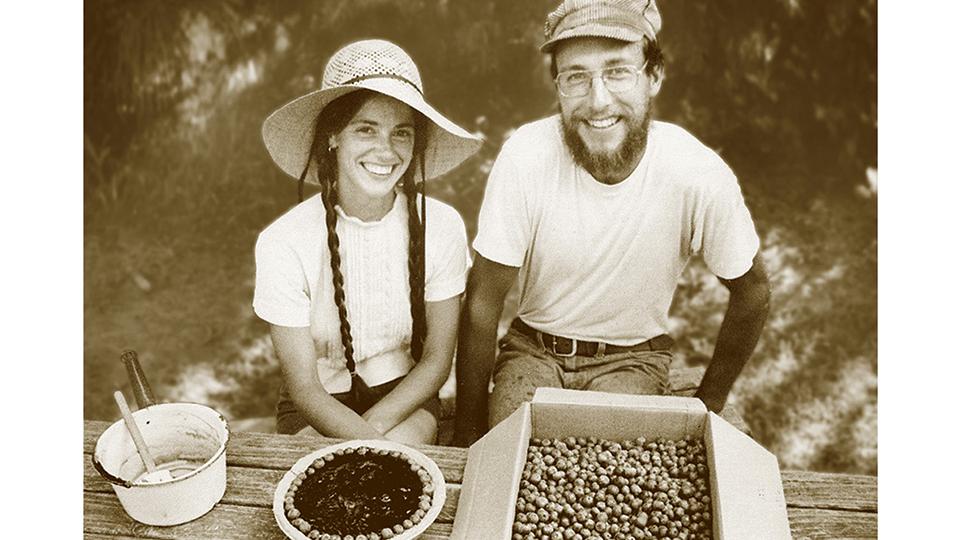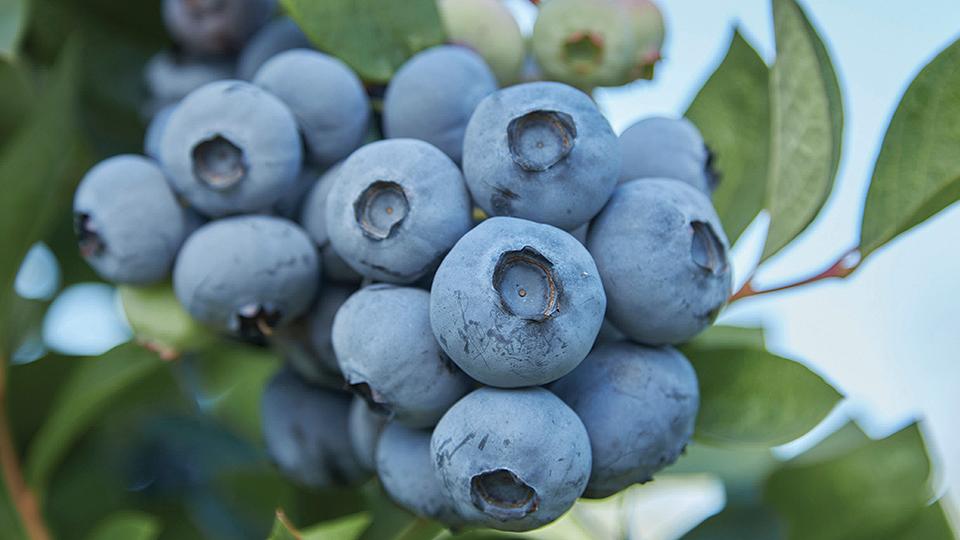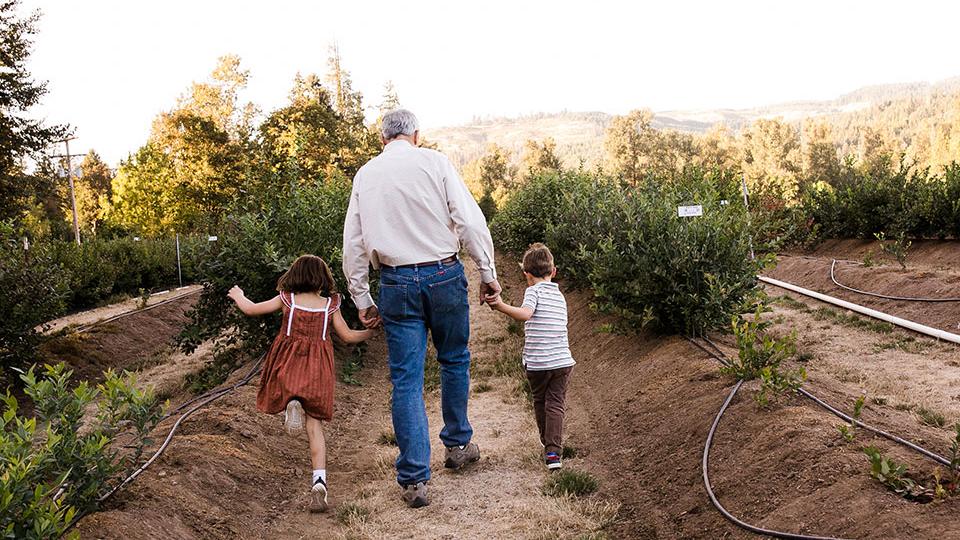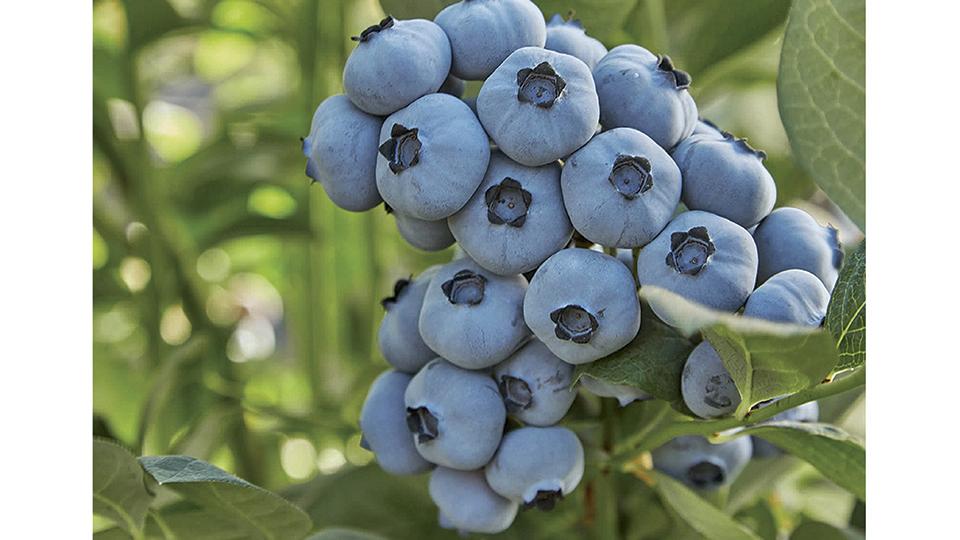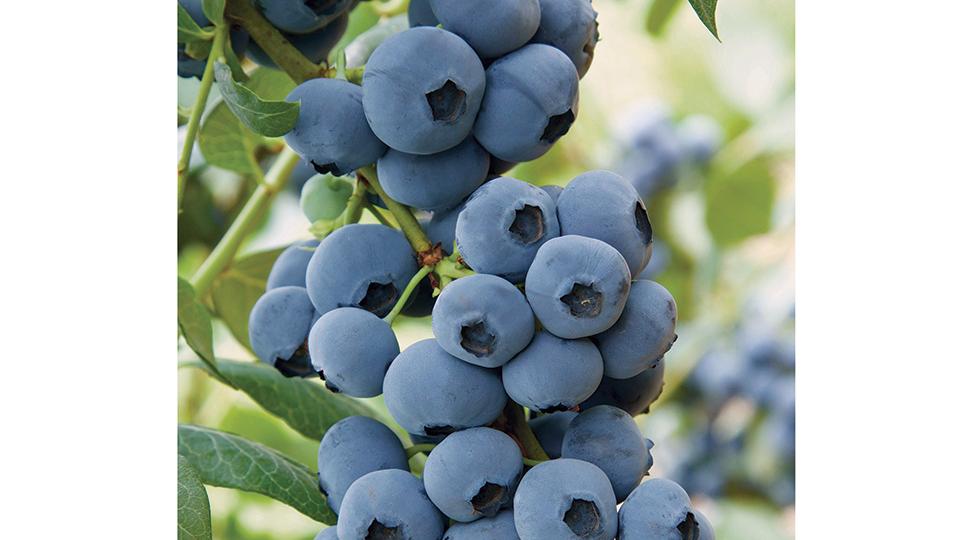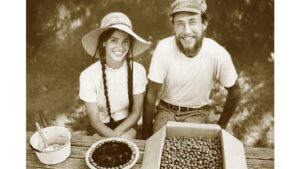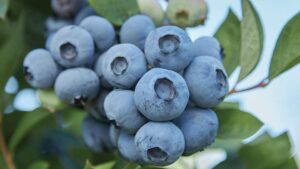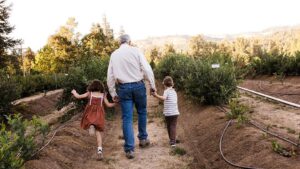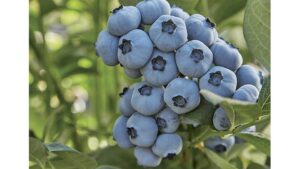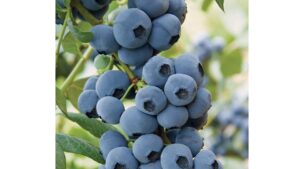How Fall Creek Nursery Grew Into a Modern American Success Story
Fall Creek Nursery’s recipe for success couldn’t be simpler. Take a product you absolutely believe in, such as blueberries, then do everything in your power to provide the producers, the growers, the best possible plants — what Founder Dave Brazelton describes as “genetic problem-solving tools” — for wherever growers may farm.
Simple concept, but the implementation has taken decades of work, and the seed for the nursery was planted in an unlikely place. Brazelton got his start in the business at the age of 15 after a six-day Greyhound Bus ride from his California home to a cousin’s 1,000-acre lowbush blueberry farm in
New Hampshire.
But Brazelton wanted to farm out West. He and his wife Barbara met in Arcata, CA — where he received bachelor’s degrees in biology and botany from California State Polytechnic University, Humboldt — and one asset they shared were scientific, inquisitive minds. She was a nurse and he a veterinary lab tech, trying to save money in the 1970s for their life plan.
“Let’s plant 5 acres of blueberries, and we’ll be happy ever after,” Brazelton recalls, adding with a chuckle, “Well, we failed at that plan.”
What changed was Marge Calkins entered their lives, a dynamo of a nurserywoman who owned a small, rundown farm and retail garden center, as well as just a few acres of blueberries and a small blueberry nursery.
Brazelton, then in his mid-20s, was playing harmonica at band practice when Barbara called to say a lady had a farm for sale near Eugene, OR, and wasn’t taking ‘No’ for an answer, even when told the Brazeltons were broke. Calkins then issued the statement that Brazelton says has been quoted often in the family: “This farm doesn’t cost you money, it makes you money. How do you know you can’t afford it if you don’t come up and take a look?”
Brazelton asked his wife how she answered, and Barbara issued the words that were to change the family’s fortunes — not to mention the U.S. blueberry industry: “I told her we’d be up next weekend!”
Calkins lived into her 90s and served as a lifelong adviser/pseudo-grandmother to the Brazeltons, and Brazelton credits her for giving them the nursery bug. Before that, they had thought of only farming, although the end product was never in doubt.
“We really thought blueberries were going to grow, and then we thought about being a part of that [nursery] business, and that made a lot of sense to us,” he says. “That’s where we formed the concept where Fall Creek came from.”
TOTAL BLUEBERRY BELIEF
It was no obvious business decision; the Brazeltons were making a pure bet on solid growth. In 1978 the state’s blueberry industry was more of a “hobby crop,” says Brazelton, with just a couple dozen growers farming about 350 acres. Today, because of improved varieties and innovative growers farming a region known for high yields and high quality, there are well over 15,000 acres of blueberries in Oregon. Fall Creek has had no small hand in that growth, but Brazelton waves it off.
“As a general rule, our customers have really led our growth,” he says. “We haven’t decided to lead the growth. We’ve gone where our customers have gone and wanted us to go.”
Brazelton admits Fall Creek wasn’t that professional in those days, but they had an ace in the hole that has served them well through the years.
“We were just mom and pop, but what we did have is a complete grower focus. We were growers ourselves, and we just focused on what they needed. And I don’t think that’s ever changed. It’s become foundational,” he says. “Even today, as we plot our five-year forecast and strategic projections for the next 10 years, we always start with talking to our customers, growers.”
Fall Creek has of course become much more sophisticated through the years as the business grew, but that customer first, last, and always attitude has not.
“Today we talk to retailers also, even consumers,” Brazelton says, “but we always start with the growers.”
Through the 1980s, the nursery grew along with the innovative Pacific Northwest growers, who Brazelton says spurred them on to look for better varieties. Northern highbush varieties came out from Arlen Draper of USDA, some of them still important. One of them, ‘Duke’, is not only still planted today, Brazelton says it’s the most widely planted variety in the world. Fall Creek still offers ‘Duke’ because, while it’s an older variety, Brazelton says all Fall Creek does is present the best possible varieties to the grower, no matter their sources. The varieties developed by Fall Creek only account for about half of their sales, Brazelton says.
The universities have been great partners through the years, Brazelton says, and if you tour through the Fall Creek research farm in Lowell, OR, you see trials from all the universities with breeding programs. But university programs “have a lot of masters,” and they can’t align as closely to business as Fall Creek.
It was perfect timing when in 1990 they were approached about being a licensee for patented varieties by HortResearch New Zealand, now part of the New Zealand Institute for Plant and Food Research. Brazelton says he immediately jumped at the chance, although he had a couple of questions: “What’s a patent? And what’s a license? Other than that, sign me up!”
CALIFORNIA GOLD
One other development that actually started in the mid-80s but took a decade to come together was the keen interest by California growers who wanted to produce blueberries in the San Joaquin Valley. But the climate, soil pH, etc., were not conducive to the varieties back then.
“A lot of the farms didn’t do well,” Brazelton recalls. “We lost a lot of people over the pass.”
Besides learning the growing conditions, especially the water chemistry, the key to developing today’s California blueberry industry was bringing in the new Florida varieties developed by breeders such as the University of Florida’s Paul Lyrene.
“Great innovative growers, plus new growing techniques, plus improved genetics can launch an industry really quickly, and they really launched California,” Brazelton says. “I look back at that as a great accomplishment, because back then growing in non-traditional blueberry environments became possible utilizing those three things. Without those breakthroughs, there wouldn’t be the growth in Eastern Washington, there wouldn’t be growth in Southern Europe, and there wouldn’t be growth in very low-chill areas like Peru. All of these stemmed from what happened there where we learned the desert climate.”
GO WITH THE GROWERS
Today, Fall Creek Nursery is realizing its dreams of growing in locations all over the world to provide better varieties, tailored in those locations to the growers. In addition to its Oregon headquarters, Fall Creek has nurseries in Mexico, The Netherlands, Peru, Spain, and South Africa, with plans to open in Chile and China soon.
Through the years, the Brazelton’s two children, Cort and Amelie, have taken greater leadership roles. Amelie serves as Executive Vice Chair of the board of directors. Cort Brazelton serves as co-CEO and Amelie’s German-born husband Boris Aust serves as Executive Advisor.
In 2016, Dave Brazelton became focused on succession planning, and the family decided to bring in management to work alongside them. Oscar Verges, a native Spaniard with a background in finance at Chiquita, was hired to serve as Chief Operating Officer. Dave Brazelton stepped aside as CEO in 2018, and Verges soon joined Cort Brazelton as co-CEO. Because they are so focused on serving growers where they farm — a core Fall Creek belief — Verges has implemented a matrix giving each regional nursery autonomy.
Interestingly, Verges says the focus on the U.S. market is different than in the expanding regions. The blueberry is one of the few fruits native to the U.S., and there is not a lot of virgin land being developed; most of it is in older varieties that should be replanted. Older blueberry varieties are generally smaller, softer, and lack the Brix of the modern varieties, many of which also provide farming advantages such as disease resistance.
“Get rid of that old flip phone and get a new smartphone,” Verges analogizes of the opportunity for growers with new varieties. “We’re developing varieties for fresh consumption that are machine-harvested. The goal is a blueberry that never touches a human hand until it’s consumed. We need better genetics, but also better harvesting machines, better storage, better sorting. Even the retailer needs to contribute, with an improved cold chain. It could be a sea change.”
Cort Brazelton is renowned for his expertise, often presenting to the industry around the world on the global blueberry market. But he says he has to hand it to his parents for being industry pioneers and the deep impact they still have. Blueberries were nowhere near as available before the Brazeltons came along.
“I think he’s rightfully accused of being the Johnny Appleseed of blueberries,” he says of his father. “That has been Mom and Dad’s goal from the beginning — to get blueberries into the mainstream.”




